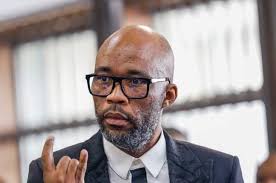International White Cane Safety Day: A call to inclusion, awareness and action

Why Nigeria’s Leaders Flee Abroad for Healthcare While Public Hospitals Collapse. Photo credit; Eja Manifest.
By Eja Manifest Eji
Today, October 15, marks International White Cane Safety Day — a day to celebrate the symbol of independence for blind and visually impaired people, to raise awareness around the challenges they face, and to call society at large to greater responsibility.
Since its establishment in 1964 in the United States (later adopted more broadly) the white cane has come to represent more than just a mobility tool — it is a statement of dignity, self-reliance, and a demand for equal access.
The White Cane: Symbol, Tool, and Rights
For many who are blind or have low vision, the white cane is a primary mobility aid. It helps detect obstacles, changes in elevation, curbs, and provides tactile feedback about the surroundings. It also signals to others — drivers, pedestrians — that its user has visual impairment and deserves caution and right-of-way.
Over decades, nations have enacted “white cane laws” that oblige motorists to yield to cane users, and laws that enshrine the right of the visually impaired to move safely and independently.
Yet, despite these legal advances and symbolic importance, many people — blind and sighted alike — still struggle with barriers in everyday life.
Everyday Challenges: Seen and Unseen
Physical and infrastructural barriers
Broken sidewalks, uneven pavements, unmarked curbs, missing tactile pavements — these make cane navigation treacherous. A user may misstep, trip, or misjudge street crossings.
Poor or missing signage, lack of audible crossing signals at intersections, or signals that change too quickly — all these reduce the safe window for crossing or orientation.
Obstructions on routes such as parked cars on sidewalks, vendors, poles, wires, or temporary obstacles make the walking path unpredictable.
Public transport inaccessibility — buses or trains that do not announce stops, that lack ramps or priority boarding, or whose schedules and platforms are poorly marked — these create dependency or exclusion.
Social attitudes and ignorance
Many drivers or pedestrians do not recognize or respect the white cane, failing to yield, ignoring cues, or even honking at a cane user unaware.
Well-intended but uninformed volunteers may grab or lead a cane user without permission or say “look out” or shout directions, which disorients the person rather than helps.
Employers or institutions may discount the abilities of a blind person, assuming they are unfit for many roles — leading to exclusion from jobs, promotions or services.
Educational, economic and institutional barriers
In many schools, curricula are not fully accessible: textbooks are not available in Braille or audio, and classrooms lack assistive devices, making inclusion difficult.
In banking, forms, dashboards, ATMs, mobile apps or websites may not be screen-reader accessible or have high-contrast modes, excluding those with visual impairments.
In hospitals and medical settings, facilities may lack tactile or Braille signage, or staff are untrained in helping visually impaired patients navigate.
Assistive devices (white canes, Braille readers, smart canes, electronic navigational aids) may be expensive or unavailable for many blind persons in some countries, limiting access.
Psychological and social isolation
Some blind people face stigma, social exclusion, or pity, rather than respect and opportunity.
Lack of support networks, mentorship, or role models means many may feel confined or unmotivated to explore independence.
In rural or less developed regions, blind people may remain dependent on family for movement, limiting their autonomy.
Pathways to Change: What Can Be Done
Effecting real change requires a concerted, multi-sectoral effort. Below are concrete steps that can be taken at various levels:
Government & public sector
1. Legislate and enforce strong accessibility laws. Ensure white cane/guide-dog right-of-way laws are embedded in traffic codes, with penalties for violations.
2. Mandate universal design in urban planning. All new sidewalks, crosswalks, pedestrian paths, public buildings, public transport stations must include tactile paving, audible crossing signals, and barrier-free routes.
3. Fund public awareness campaigns. Use mass media to educate drivers, pedestrians, and communities on how to interact respectfully and yield to cane users.
4. Supply assistive devices. Subsidize or provide free white canes, electronic navigation aids, Braille devices especially in underserved areas.
5. Integrate accessibility oversight bodies. Establish an independent commission to monitor accessibility compliance, field complaints, audit public infrastructure.
Private sector & institutions
1. Adopt inclusive design for services. Banks, hospitals, schools, retail outlets should ensure their digital services, ATMs, websites, signage, and physical environments are accessible (screen-reader compatibility, high-contrast, audible prompts, Braille/ tactile signage).
2. Train staff and employees. All frontline staff should be taught how to interact courteously and assist visually impaired users (asking before helping, offering guide-arm, verbal cues) rather than assuming.
3. Audit and retrofit spaces. Private buildings and institutions should audit their premises for accessibility gaps and retrofit with ramps, tactile guides, clear corridors, audio signals.
4. Collaborate with disability organizations. Partner with blind associations or NGOs to pilot inclusive programs, get feedback, and co-create solutions.
Educational institutions & training
1. Accessible curriculum and resources. Provide textbooks, exams, and learning materials in Braille, large print, or audio formats.
2. Orientation and mobility training. Incorporate services that teach cane use, spatial orientation, adaptive skills from school level.
3. Inclusive classrooms and support services. Make exam settings, class interaction, laboratories, computer rooms accessible to the visually impaired
4. Scholarships and mentorship programs. Support blind students financially and through mentorship to build confidence and reduce dropout rates.
Healthcare and rehabilitation services
1. Accessible clinics and hospitals. Signage, pathways, waiting areas, consultation rooms should be navigable by cane users.
2. Rehabilitation programs. Offer mobility and orientation training, assistive device distribution, and psychological support to those newly blind.
3. Sensitization of medical staff. Doctors, nurses, support staff should be aware of the extra hurdles visually impaired patients face and accommodate accordingly.
Community, individuals, and advocacy groups
1. Spread awareness. Use social media, local events, schools, faith-based groups to teach about white cane safety and respect.
2. Respect and assistance. When encountering a person using a white cane, yield, step aside, avoid sudden movements, don’t honk, and ask politely “Would you like help?”
3. Volunteer and support. Participate in local blindness associations, offer time, funding, or expertise.
4. Role modelling and storytelling. Elevate the stories of blind persons who succeed — in business, the arts, public life — to challenge stereotypes and inspire.
A Call to Action
On this International White Cane Safety Day, let us reaffirm our commitment to building a society where blindness is not a barrier, but simply a variation of human experience. Let us commit to:
Seeing the person, not just the disability — respect their dignity, autonomy, and potential.
Building inclusive environments — physical and digital infrastructure that works for everyone.
Enforcing laws and standards — so that rights are not just stated, but practiced.
Cultivating compassion informed by knowledge — guiding our interactions with courtesy, not condescension.
When a blind child can walk confidently to school, when an adult can board a bus or access financial services independently — that is real measure of progress.
Let every crossing stripe, every building entrance, every bank kiosk, every classroom and hospital hallway echo the message: All of us belong.
Happy White Cane Safety Day.
May our steps today—together—lead to a more accessible tomorrow.




